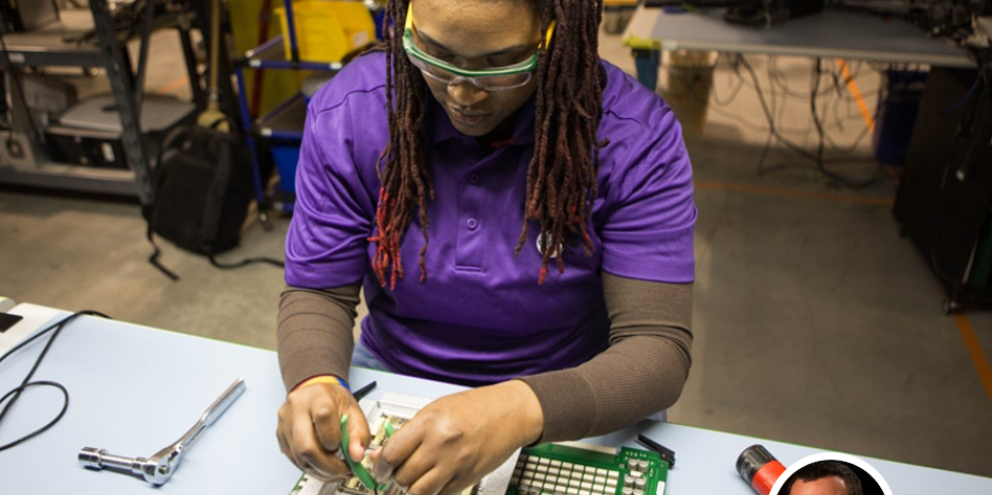
Clinical engineers—who are also often referred to as biomeds, biomedical engineers, or biomedical equipment technicians—face extraordinary challenges in today’s constantly evolving healthcare environment. The digital transformation movement shows no signs of slowing down, and while it presents great promise, it is also creating new difficulties for clinical engineers who are tasked with managing the influx of technologies. This in itself would be a significant challenge, but it grows more complex when stacked up against new and escalating pressures that many clinical engineers face, including overseeing more connected medical devices, ensuring ongoing protection against medical device cybersecurity threats, and navigating staffing and resource limitations.
As a practicing clinical engineer, I am extremely familiar with these challenges and the strains they are creating for clinical engineering teams. That’s one reason I'm so excited that, over the past few months, the GE HealthCare Patient Care Solutions Services team has interviewed clinical engineers from hospitals and health systems across the country. The overall goal? To learn more—directly from clinical engineers—about their pain points, challenges, and perspectives.
In this piece (the first half of a two-part series on this topic), I’m highlighting three of the challenges that continually rose to the top during those interviews with clinical engineers. The second piece of this series (located here), identifies some of the innovative and effective approaches that healthcare organizations and clinical engineers are taking to overcome these challenges.
Challenge #1: Keeping up with Increasingly Connected Medical Devices
Connected medical devices are becoming an extremely common and critical part of healthcare delivery, with an average of 15 connected medical devices per patient bed[1,2]. While these devices offer many benefits to health systems and patients, they are also creating new pressures and burdens for clinical engineering teams.
In addition to managing, maintaining, and repairing these devices, clinical engineers need to be able to troubleshoot any network and connectivity issues that arise. This requires a different skill set, and often results in additional training needs.
“The biggest challenge that we have is trying to learn how these devices connect to the network and how to keep them connected to the network if they drop out,” said one of the engineers interviewed by the GE HealthCare Patient Care Solutions Services team. “We're such a large facility, if something loses connectivity from the network it's not just IT that we have to involve, it might be a network engineer, it might be our PACS team”[3].
Another individual interviewed, who leads clinical engineering services at a regional health system, agreed that connected medical devices are raising new challenges[4]. “Just about anything we buy now can be connected to the network,” he said. “If it's got a Windows operating system and you put it on the network, then it has to be managed and maintained. You have to have a strategy around applying updates and all that.”
Challenge #2: Managing Medical Device Cybersecurity Risks
The increasing connectivity of devices is also leading to cybersecurity challenges for clinical engineering teams. In fact, every individual interviewed by the GE HealthCare Patient Care Solutions Services team mentioned that medical device cybersecurity is a critical area of focus—and for good reason. A December 2023 article in Fierce Healthcare noted that while phishing was a preferred initial access point for cyber attackers in the past, that is beginning to shift toward “vulnerability exploit” attacks through software vulnerabilities and connected devices[5].
Although cybersecurity traditionally has traditionally fallen under the purview of IT, clinical engineers are becoming increasingly involved due to the nature of connected devices. Many clinical engineers are not only being asked to find and repair these devices, for example, but also to apply security patches when needed.
“I have two systems analysts, and part of their role is to utilize some of the tools we have and monitor risk from a cybersecurity perspective, and also from a patching perspective,” said one of the clinical engineers interviewed. “Can we patch things remotely? Do we need to physically get in front of the device to patch it? If we do patch it, do we have to do a full performance verification, or can we just patch it, reboot it, and move on? All of that comes into play”[6].
Another interviewee noted that his team is in the midst of a large-scale security update and patching project. “Our teams have been implementing a lot of really positive but difficult changes because the amount of information that we have to gather off a new device is 10 times more than even three or four years ago”[7].
I myself have significant cybersecurity concerns related to older devices, such as those still operating on Windows 7. It’s not uncommon to encounter these devices, particularly when I’m working in hospitals or health systems with smaller budgets for new equipment or updates.
Challenge #3: Navigating Workforce Shortages and Resource Constraints
At the same time that clinical engineers are confronted with the workload burden associated with increasingly connected devices and growing cybersecurity concerns, they are also struggling with workforce and resource challenges.
A 2022 job satisfaction and compensation survey found that nearly one-third of clinical engineers were 55 and older. In addition, more than half of respondents (55%) indicated their workload is either excessive or heavy[8].
Widening the skills gap and burden further, many clinical engineering training programs have closed over the last few years, according to Danielle McGeary, Vice President of Healthcare Technology Management, at AAMI, a national association for clinical engineers and other healthcare technology management professionals. “People aren't learning about the field,” she said. “We're not creating a pipeline”[9].
Nearly every clinical engineer interviewed by the GE HealthCare Patient Care Solutions Services team said they’ve felt the impact of this shift—with many stating that they are struggling to hire and retain enough clinical engineers with expertise across key areas. “Trained, good, solid people—they're a shortage for sure,” one academic medical center CIO who manages clinical engineers told us[10].
Other clinical engineers interviewed cited resource challenges not necessarily due to a lack of clinical engineers—but due to other staffing reductions. For example, one individual mentioned that his organization recently eliminated a team, separate from clinical engineers, that rounded on rooms to locate a key piece of equipment that required routine maintenance [11].
“That's now something that falls under my responsibilities,” he said, noting that the system has thousands of these devices. “It’s a challenge to go from having somebody rounding the hospital 24/7 to someone like me who comes in once a day, rounds those rooms to see if there's something there, and pulls the devices that need maintenance or repair”[12].
Effective Tactics for Overcoming Challenges
Clinical engineers are an integral part of patient safety and care delivery, yet the challenges I’ve noted in this piece threaten our ability to provide optimal services, and as a result, could hinder our ability to support optimal care delivery.
For insights into how hospitals and health systems can support their clinical engineering teams amidst these challenges, read the second part of this series: “How to Overcome Clinical Engineering Challenges: 4 Strategies for Hospital Leaders and Clinical Engineers.”
We at GE Healthcare understand the challenges you are facing today. We know you are working hard to ensure equipment is ready and able to support optimal patient care. GE HealthCare’s comprehensive suite of services is here to help you, the clinical engineer, keep your fleet completely ready for care and deliver value across the life of your devices. Learn more about GE HealthCare Patient Care Solutions Services.
Sources:
1. Securing the future of connected healthcare, Forbes
https://www.forbes.com/sites/forbestechcouncil/2022/04/21/securing-the-future-of-connected-healthcare/?sh=2a9012ea2824
2. 82% of healthcare organizations have experienced an IoT-focused cyberattack, survey finds, Fierce Healthcare
https://www.fiercehealthcare.com/tech/82-healthcare-organizations-have-experienced-iot-focused-cyber-attack-survey-finds
3. Double-blinded research interviews conducted independently by Sage Growth Partners in March and April 2024
4. Double-blinded research interviews conducted independently by Sage Growth Partners in March and April 2024
5. 2024 Outlook: The cybersecurity trends health system leaders need to know, Fierce Healthcare
https://www.fiercehealthcare.com/providers/2024-outlook-cybersecurity-trends-health-system-leaders-need-know
6. Double-blinded research interviews conducted independently by Sage Growth Partners in March and April 2024
7. Double-blinded research interviews conducted independently by Sage Growth Partners in March and April 2024
8. HTM Salary Survey 2022, 24x7 Magazine
https://24x7mag.com/professional-development/department-management/salaries/htm-salary-survey-2022
9. Shortage of biomed techs could lead to a crisis in patient safety, UpNorthLive/ABC
https://upnorthlive.com/news/local/shortage-of-biomed-techs-could-lead-to-a-crisis-in-patient-safety
10. Double-blinded research interviews conducted independently by Sage Growth Partners in March and April 202413. Double-blinded research interviews conducted independently by Sage Growth Partners in March and April 2024
11. Double-blinded research interviews conducted independently by Sage Growth Partners in March and April 2024
12. Double-blinded research interviews conducted independently by Sage Growth Partners in March and April 2024

Mark Huy
Mark Huy - Client Service Technician at GE HealthCare
Mark has 12 years’ experience in Biomedical Engineering. Mark attends to imaging calls for X-ray, MRI, and Ultrasound, while servicing and maintaining a fleet of biomedical equipment at Central DuPage Hospital for GE Healthcare. As a Lead Tech, he is a critical part of construction meetings for new projects at the hospital.
Mark has his master’s degree in information security from Lewis University, and his undergraduate in Network Administrator and Electronic Systems Management in Biomedical Engineering, from Southern Illinois University.








